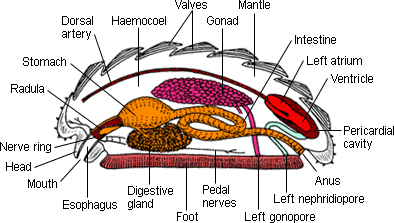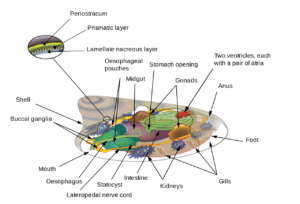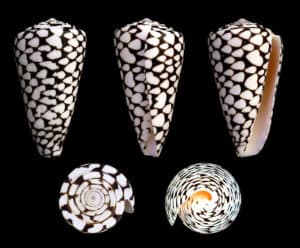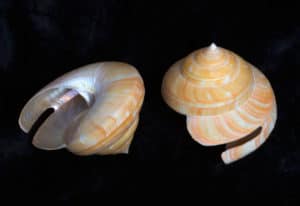
If you ever walked on the sand or beaches. You must have seen the seashell along the beach. When it’s already been washed up by the waves. The seashell will nearly always be empty. Some of the people maybe only know a little bit knowledge about seashells.
Common people will only know that they were beautiful and pretty things lying on the sand. Since this is almost summer and most of you will go to the beaches and find this thing.
Read: Animals in Ocean Biome – Ocean Ecosystem
General Description
Have you ever imagine what thing living inside the beautiful seashell? What actually they were trying to protect? Alright, since most of the people does not know what creature that is living inside the seashells. Let’s read our explanation about them. All of the seashells that we found on the sand of the beach was a home for a sea animal that has died. Yes, they were dead. When we speak the shells, we maybe don’t know or seems like we don’t even care about the fact that said that the seashells were a home for a soft animal named mollusk. Mollusk is a very soft invertebrate animal. They have different types of Mollusk and all of them are very different. Some are really small, measuring only a few centimeters. Such as clams, snails, etc. Some are enormous and up to 20 meters long.
When we speak the shells, we maybe don’t know or seems like we don’t even care about the fact that said that the seashells were a home for a soft animal named mollusk. Mollusk is a very soft invertebrate animal. They have different types of Mollusk and all of them are very different. Some are really small, measuring only a few centimeters. Such as clams, snails, etc. Some are enormous and up to 20 meters long.
Read also:
All of the seashells that we found on the sand of the beach was a home for a sea animal that has died. Yes, they were dead. When we speak the shells, we maybe don’t know or seems like we don’t even care about the fact that said that the seashells were a home for a soft animal named mollusk. Mollusk is a very soft invertebrate animal. They have different types of Mollusk and all of them are very different. Some are really small, measuring only a few centimeters. Such as clams, snails, etc. Some are enormous and up to 20 meters long.
Mollusk is a very soft invertebrate animal. They have different types of Mollusk and all of them are very different. Some are really small, measuring only a few centimeters. Such as clams, snails, etc. Some are enormous and up to 20 meters long.Even each of the animal is different. They have the common characteristic. They have a very soft body. Some even protect their body with a shell. But, some of them decide to be naked like a mussel. Most mollusks that you found on the beach basically have shells outside their soft bodies.
Even each of the animal is different. They have the common characteristic. They have a very soft body. Some even protect their body with a shell. But, some of them decide to be naked like a mussel. Most mollusks that you found on the beach basically have shells outside their soft bodies.As mentioned before, this shell was meant to protect their body. The shell is mollusk’s skeleton. It is a part of the animal and mollusk was attached to it by muscles. The soft animal can never leave its shell. The Shell is a lying stone, and they were built by the mollusk itself.
As mentioned before, this shell was meant to protect their body. The shell is mollusk’s skeleton. It is a part of the animal and mollusk was attached to it by muscles. The soft animal can never leave its shell. The Shell is a lying stone, and they were built by the mollusk itself.
See also: Conservation of Tortoise – Ocean Pollution
Mollusks
Another parts of Ocean Seashells is mollusks. Have you ever found a seashell that shapes a bit round and some of them were ovals? Most of you only picked it and did not even care whether they were ovals or round. Well, they have two different types of seashells. One is univalve and bivalve. Univalve are shells made up of single structures. But bivalve, which we can see “Bi” means two, means they have two separate halves.
a. Univalve
 as you can see from the picture beside you. This is the univalve seashells anatomy:
as you can see from the picture beside you. This is the univalve seashells anatomy:
a. Apex: This is the point where the juvenile mollusk began.
b. Suture: Where each completed spiral meets or connects.
c. Body whorl: The last and largest spiral of which most of the animal resides.
d. Inner lip: The inside edge of the opening.
e. Spire: Whorls above the body whorl where the younger body of the mollusk previously inhabited.
f. Outer lip: The outside edge of the opening.
g. Aperture: The opening surrounded by the inner and outer lip.
h. Canal: This tube is used for feeding or throwing the waste.
Read also:
B. Bivalve
 Bivalves are what many people think of when they think of a seashell. Clams, oysters, mussels, cockles, and scallops make up this class of mollusks. And here are the anatomy:
Bivalves are what many people think of when they think of a seashell. Clams, oysters, mussels, cockles, and scallops make up this class of mollusks. And here are the anatomy:
a. Growth lines: These lines characterize a transitory suspension in growth.
b. Left valve: The left valve of a claim can be identified as follows. The lunule or indented side will be on the left.
c. Umbo: (aka beak) The curved protrusions at the base of each valve representing the initial growth of the bivalve.
d. Right valve: The entire right half of a bivalve.
e. Lunule: The oval or heart shaped indentation located in the front of the umbones or breaks.
C. The Polyplacophora
 We commonly know this mollusks as Chiton. This type of shells have eight valves. Chiton normally have seperate males and females. The males will release the sperm into the water.
We commonly know this mollusks as Chiton. This type of shells have eight valves. Chiton normally have seperate males and females. The males will release the sperm into the water.
Chinton have a heart and an open blood system. They also have a pair of kidneys that open to the pallial cavity, a simple nervous system, and many special minute sensory organs that pass through the shell valves. The mouth is surrounded by a simple velum and the head lacks tentacles or eyes.
Read also:
D. Cephalopods
 These types of Cephalopods normally include octopus, squid, and the chambered nautilus. The chambered nautilus is the only cephalopod with a shell. As a group of the most famous Mollusks, they have the most intelligent, comparatively mollusks.
These types of Cephalopods normally include octopus, squid, and the chambered nautilus. The chambered nautilus is the only cephalopod with a shell. As a group of the most famous Mollusks, they have the most intelligent, comparatively mollusks.
Their structure of body shows that Cephalopods are mollusks. They have no skeleton neither internal nor external. They also have no trace. Like the other mollusks. Their body divided into head, visceral sac and foot, the mantle as their protective coat of visceral sac.
See also:
E. Monoplacophora
 You will probably never meet any of this shells. Maybe because of this shells already extinct. They only have records until 1952 when live specimens were discovered in deep oceans. In the present time, 11 species are known.
You will probably never meet any of this shells. Maybe because of this shells already extinct. They only have records until 1952 when live specimens were discovered in deep oceans. In the present time, 11 species are known.
Monoplacophorans are small and have a single, caplike shell, giving them a limpet-like appearance. These shells have univalve anatomy.
See also: Species of Whales – Facts of Whale Shark
Color and Pattern
Every seashells has each different colors and patterns, as follows:
A. Color
Have you ever wandered around how did a seashell may look pretty, hollow and some of you probably think they were… quite scary? Well, for certain creature that i have explained to you it means more than something. And how did they ever form?
At this point, we will try to explain you how did they create? The seashell was made by the mollusk itself. Well, ya! It was made by the mollusk. Mollusks were looked like a worm. When they were a worm, they take salts and some chemicals from the water around them and began to produce outer shells.
Though it attached into the animal, it does not affect on any of animal’s body growth and processes. Shells are not the living body of the animal. The shells is formed out of minerals, not cells. This is why, when the animals were dead, the sturdy shell stay still and left behind.
See also: Types of Algae – Types of Sea
B. Patterns
Okay, after you know how the shell was formed? Now, of course, you will also wonder why they were full of colors? And why they have so many shapes and forms?
So, here are some other things that you will probably don’t know why they have different shape and pattern?
Basically, the why the shells have different colors really depend on what the mollusk has been eating or we can say its diet. You might don’t know that the warmer the place is, the more food variant the mollusks can get. So, it is a blessing for mollusk which living inside the seashells that living in a tropical area like Indonesia. Cold-water mollusks tend to eat only a few source of foods are commonly have a darker color and have a few mixed colors.
The pattern of the shells will depend on the rate of the mollusk’s secretion. If the entire mantle was secreted continuously by the pigment, the result would be one solid color. But, If the secretion is a little bit erratic, as a result, there will be some speckless and spots on the shells.
Read also:
In the other hand, when the pigment secreted continuously, but only in several certain areas. It will cause the radial line and pattern. Well, here are some of the amazing forms of the shells:
1. Giant Sundial
 First of all is Giant Sundial. We called it Sundial shells because of its unique shape of the shells. These shells have flattened and shown a lenticular edgewise appearance. Giant Sundails are sometimes called as the winding-staircase shells.
First of all is Giant Sundial. We called it Sundial shells because of its unique shape of the shells. These shells have flattened and shown a lenticular edgewise appearance. Giant Sundails are sometimes called as the winding-staircase shells.
This kind of shells normally lives in a warmer sea.
They commonly being seen in the West and East coasts of North and South America, and also in Indo-Pacific oceans. This is the reason why these kind of seashells were really easy to be found in Indonesian beaches or oceans.
2. Marble Cone
 Next is Marble Cone. Due to its cute and pretty shape. People always thought this shell’s shape was the cutest one. And maybe the easiest shells to be found on the beaches. Well, This shell usually used by mollusks that have a venom inside their body.
Next is Marble Cone. Due to its cute and pretty shape. People always thought this shell’s shape was the cutest one. And maybe the easiest shells to be found on the beaches. Well, This shell usually used by mollusks that have a venom inside their body.
This type of shells commonly being found in the oceans worldwide but, they also were found in Western Indo-Pacific region. Mollusks that can live in this cone shells, can grow up to 23 cm in length Its sharp tooth was created to inject the venom into its prey body and eat them the whole body.
3. Slit Shell
 The next one is Slit Shells. I believe most of you already seen this kind of seashells. This kind of seashells come from a very ancient group of mollusks. And nowadays only sixteen species that are survived. And those species are vegetarian. The slit of the shells was used to breathe.
The next one is Slit Shells. I believe most of you already seen this kind of seashells. This kind of seashells come from a very ancient group of mollusks. And nowadays only sixteen species that are survived. And those species are vegetarian. The slit of the shells was used to breathe.
The family of slit shell mostly extinct. Only sixteen species are known still exist. That is why this shells might be the most expensive shells in the collections. This shells normally found in tropical and subtropical waters.
4. The Polyplacophora
 The Polyplacophora normally called Chitons. Chitons are the mollusks that have eight valves on their shells. Chitons normally have separate sex between males and females. Their sperm will release by males into the water.
The Polyplacophora normally called Chitons. Chitons are the mollusks that have eight valves on their shells. Chitons normally have separate sex between males and females. Their sperm will release by males into the water.
Their mouth is surrounded by a velum and their head lacks tentacles or eyes.
Chitons are living worldwide. You can find them in the cold water and also tropics. They normally live on the hard surface like under the rock.
See also: Endangered Fish Species
Seashells and Ecosystem
It’s a normal part of your vacation to the beach when you take one shell from the beaches and keep it as a souvenir or something that remind you of the vacation. Now, you might think twice next time you take the seashells and put in inside your pockets.
In the study, researchers study have found that taking the seashells out of the beaches can damage the ecosystem of the coastal. This also can risk the organism that relies on shells as their living. Seashells are important for the coastal ecosystem and for the researchers. Seashell itself provides materials for bird’s nests, the next home or attachment for algae, sea grass, sponges and many other microorganisms. Fish will use them to hide from the predators. And crabs sometimes use it as temporary shelters.
Read also:
Next thing to not to do when you meet the seashells is trying to not take the spiral seashells. There are more of thousands of species of hermit crabs who will need empty shells for survival. By taking the spiral seashells you will as well take their next-to-be-home. Larger crabs will try to find a larger shell to be their next home. If you ever take it, the crabs will die because of the predation.
In addition, for the sakes of the ocean ecosystem. We better leave the seashells in the beaches which are their original habitat. Since we’re living in the digital era, just take the photo and leave the seashells in the original place. Furthermore, with taking the photo we’re not only saving the ecosystem we also could share it the whole world about their beauty.
Those are complete explanation about Ocean Seashells.